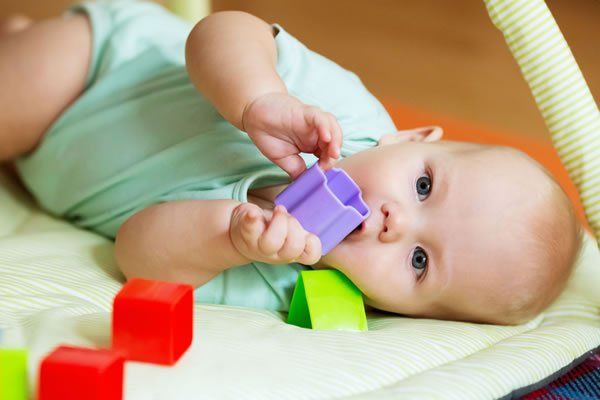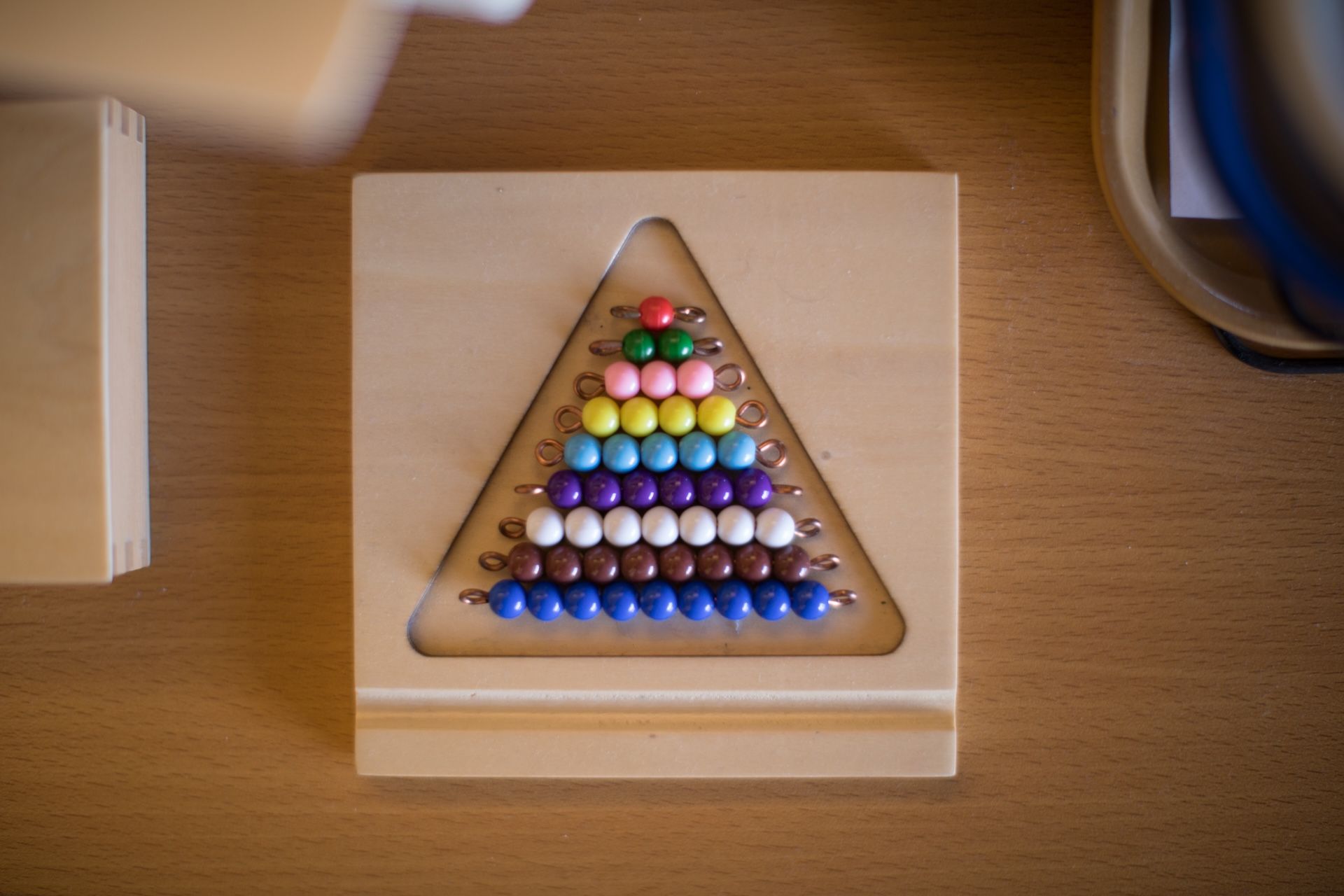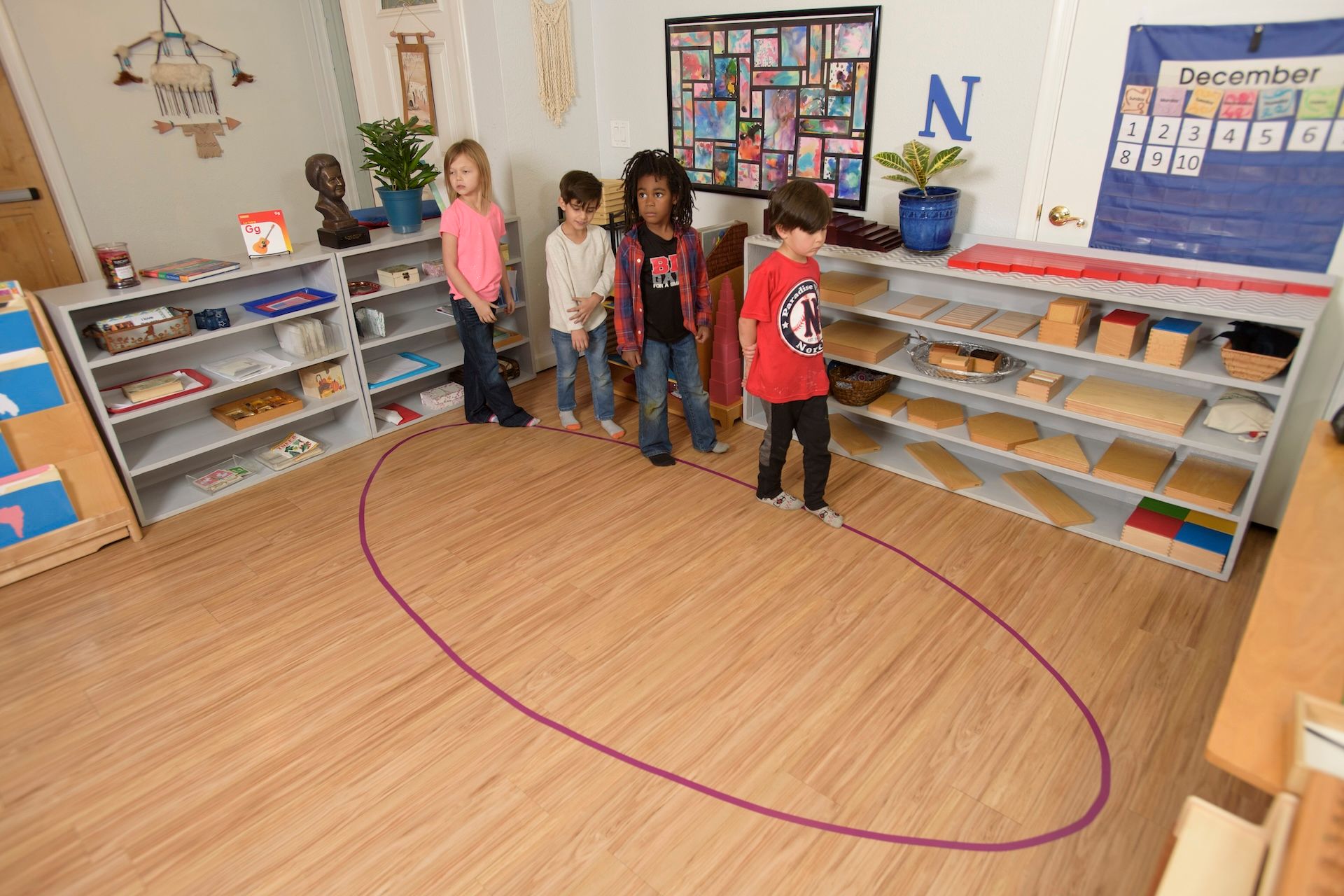Montessori style education can begin very early in a child’s life. Here at Pebblecreek’s infant program , we work with children aged 6 weeks to 18 months. Whether you choose to enroll your child in a program at that age or not, your child can benefit from Montessori principles applied in your home.
Infant care using the Montessori method is very different from traditional daycare. And Montessori-style infant rooms look very different from traditional nurseries. The focus is on creating a child-directed environment that encourages independence, learning, and exploration in a safe space.
Baby-Proofed Space
The infant room(s) that you set up in your home must be safe for the baby to explore. Make sure you cover all wall outlets, put child latches on doors, and use gates to keep the baby away from unsafe areas. Check to make sure there’s not anything sharp at baby’s level. Remove anything within their reach that could be knocked over or pulled down and become dangerous.
Since your baby will have access to the floor, make sure it’s kept clean and the material is safe. Consider installing hardwood floor or using hypoallergenic carpeting. If you paint the room, choose a non-toxic paint and let the room air out thoroughly before moving your baby in.
Scaled Down Furniture
Child-size furniture is a key aspect of a Montessori infant’s room. Shelves are placed at child-level so they can put away and get out their own toys. Rather than using high chairs, Montessori schools and homes provide sturdy child-size tables and chairs. Once babies can sit up and start eating solid foods, they can start using a Montessori weaning table and then learn to feed themselves.
Beds in a Montessori-style infant’s room consist of a mattress placed on the floor. Some of these beds have railings on three sides to keep the child from rolling off. The idea is that a child should be able to crawl out of and into the bed themselves, providing freedom of moment within their baby-safe room.
Eye-Level Decorating
Most nurseries are decorated with adults in mind, placing wall decoration at eye-level for the parents. But the pictures aren’t going to do your baby any good way up there. A Montessori room places pictures low on the wall so babies can look at them. They also typically include a horizontal mirror on the wall beside the baby’s bed.
Montessori baby rooms often include mobiles to entertain infants and develop skills including depth perception and concentration. Mobiles are hung out of the child’s reach above their bed. You can find Montessori mobiles for purchase online or DIY your own .
You can choose to incorporate all these tips in your home, or pick and chose what works best for you and your baby. Just focus on creating a safe, clean environment for your baby to explore and learn about their world, and they’ll have a head-start on lifelong learning.
The post Montessori In The Home: Creating An Infant-Friendly Room appeared first on Pebblecreek Montessori.
Hours
MONDAY - FRIDAY
HALF DAY: 8:30a – 12 noon
ACADEMIC DAY: 8:30a – 3:30p
EARLY CARE: 7:00a – 8:30a
AFTER CARE: 3:30p – 6:00p
OFFICE: 8:00a - 4:00p
Programs
Connect
Pebblecreek Montessori





